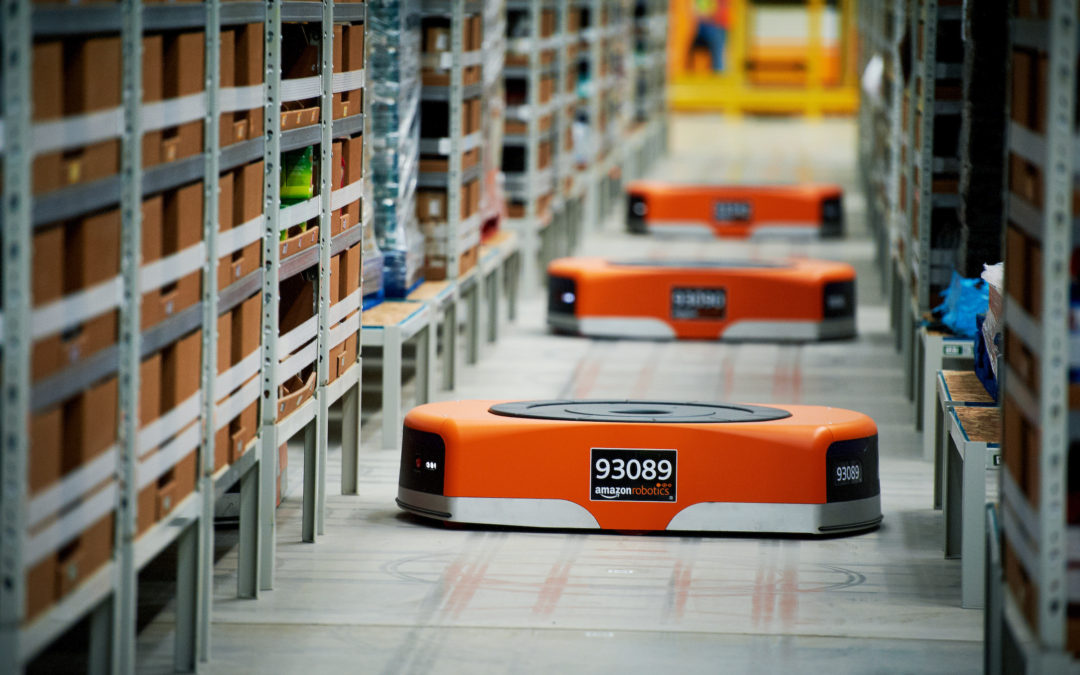More than 300 million square feet of new warehouse and fulfillment space is needed in the US to support e-commerce. Amazon is addressing this issue with huge (3 million+ square feet) robotic fulfilment centers. These multi-level centers where humans and robots work together are springing up around the country.
Seen from above, the scale of the system is dizzying. Humans scan a package’s barcode under a red laser dot, and place it on one of hundreds of orange robots. The bot zips off, bound for one of many rectangular holes in the floor corresponding to zip codes. When it gets there, the bot engages its own little conveyor belt, sliding the package off its back and down a chute to the floor below, where it can be loaded onto a truck for delivery https://www.cnbc.com/2021/06/13/amazon-details-new-warehouse-robots-ernie-and-bert.html.
Amazon needs this robotic system to supercharge its order fulfillment process and make same-day delivery a widespread reality. Humans and robots are fusing into a cohesive workforce, one that promises to harness the unique skills of both parties.
While the introduction of robots to the workplace often raises questions about whether human jobs will be replaced, Amazon indicates that they allow workers to focus on tasks that most need their attention while minimizing their potential for injury. Also, many technical jobs at Amazon have been added to manage and improve the robotic technology. In reality, Amazon has added over a million high paying jobs around the world since it began using robotics. Amazon indicates that in the not too distant future, robotic vehicles will actually deliver packages directly to customers. This delivery system is currently under development in Finland https://www.cnbc.com/2021/07/01/amazon-plans-to-build-scout-delivery-robot-tech-in-finland.html.
Collaboration between humans and automation is the future — it will result in safer operations and higher paying technical jobs of the future.

